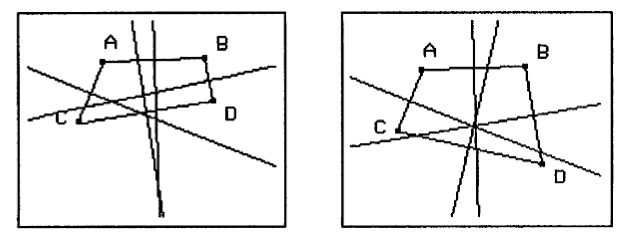Description:
Source(s):
Sia dato quadrilatero ABCD. Tracciate gli assi a del lato AB, b del lato BC, c del lato CD, d del lato DA. Sia H il punto di incontro degli assi a e b. K il punto di incontro degli assi a e d, L il punto di incontro degli assi c e d, M il punto di incontro degli assi c e b.
Studiate come varia HKLM al variare di ABCD.
Dimostrate le congetture prodotte durante l'esplorazione fatta in Cabri.
Olivero 2002 p. 267
You are given a quadrilateral ABCD. Construct the perpendicular bisectors of its sides: a of AB, b of BC, c of CD, d of DA. H is the intersection of a and b, K of a and d, L of c and d, M of c and b.
Investigate how HKLM changes in relation to ABCD.
Prove your conjectures.

